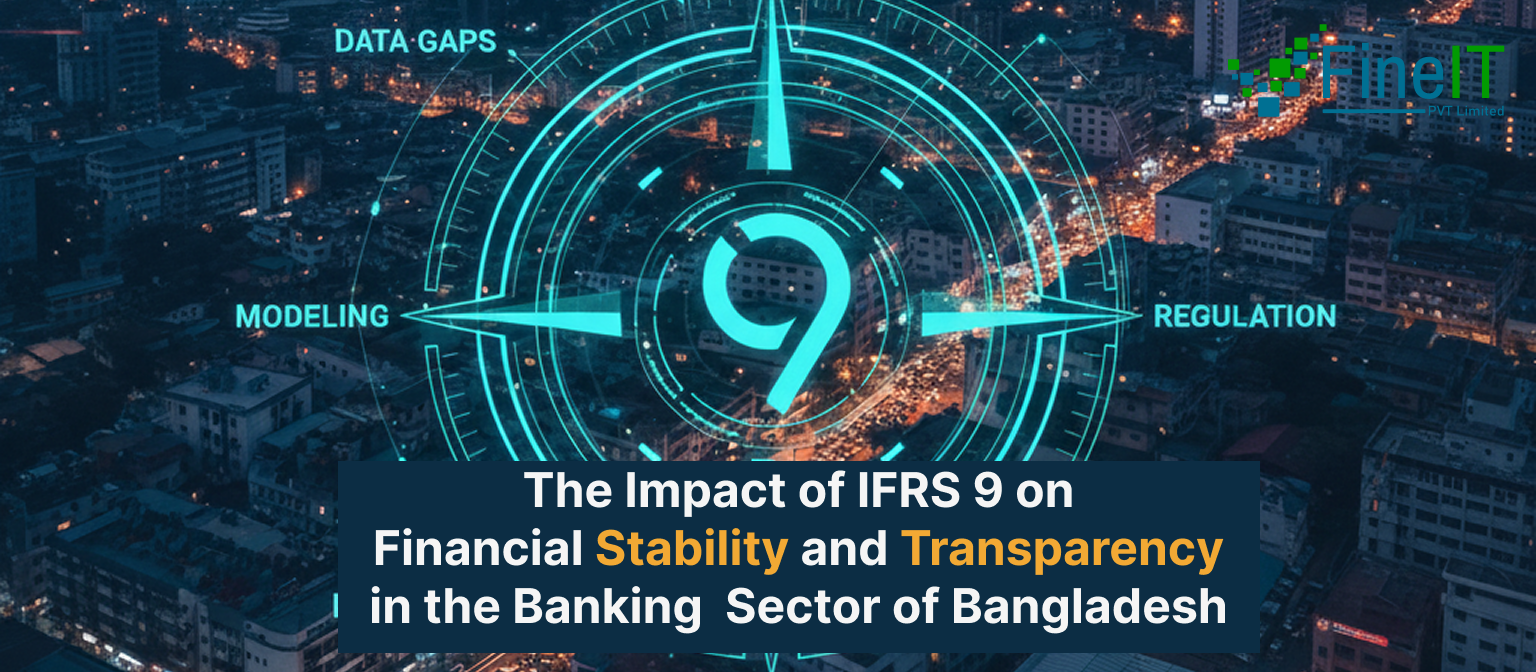The adoption of International Financial Reporting Standard 9 (IFRS 9) by financial institutions globally marked a significant shift in accounting for financial instruments. For Bangladesh’s banking sector, this transition from IAS 39’s incurred loss model to IFRS 9’s forward-looking expected credit loss (ECL) model has profound implications for financial stability and transparency. While presenting challenges, IFRS 9 holds the promise of a more robust and realistic assessment of credit risk, ultimately strengthening the banking system.
A Paradigm Shift: From Incurred Loss to Expected Credit Loss
Under the previous IAS 39, banks recognized losses only when an impairment event had occurred. This “too little, too late” approach often led to delayed recognition of credit losses, potentially obscuring the true health of a bank’s loan portfolio. IFRS 9 fundamentally changes this by requiring banks to estimate and recognize expected credit losses over the lifetime of a financial instrument, even before an actual default occurs. This proactive approach aims to address the cyclical nature of credit risk and provide a more timely reflection of a bank’s financial position.
Enhancing Financial Stability: Early Recognition and Prudent Provisioning
One of the most critical impacts of IFRS 9 on financial stability in Bangladesh is the earlier recognition of potential losses. By forcing banks to consider future economic conditions and their potential impact on credit quality, IFRS 9 encourages more prudent and adequate provisioning. This means that during periods of economic downturn, banks should ideally have built up sufficient provisions, reducing the likelihood of sudden, sharp increases in non-performing loans (NPLs) that could destabilize the sector.
In Bangladesh, where the NPL situation has been a persistent concern, IFRS 9’s emphasis on forward-looking provisioning is particularly pertinent. It compels banks to develop sophisticated models, utilize comprehensive historical data, and incorporate macroeconomic forecasts into their credit risk assessments. While the initial implementation may lead to a “day one” increase in provisions for some banks, reflecting the immediate recognition of previously unrecognized expected losses, this ultimately contributes to a more resilient banking system capable of absorbing future shocks.
Bolstering Transparency: A Clearer Picture for Stakeholders
IFRS 9 significantly boosts transparency by requiring more detailed disclosures about how banks manage their credit risk. Financial statements now offer a deeper insight into:
- Credit Risk Management Practices: How banks categorize financial instruments into Stage 1, Stage 2, and Stage 3 (performing, underperforming, and defaulted loans) provides clarity on their risk assessment framework.
- Methodologies for ECL Calculation: Disclosure of the models, assumptions, and significant judgments used to estimate ECLs allows investors, regulators, and other stakeholders to understand the basis of the reported provisions.
- Impact of Macroeconomic Factors: Banks are required to explain how changes in economic forecasts affect their ECL provisions, offering a clearer link between economic conditions and financial performance.
For Bangladesh, improved transparency can lead to several positive outcomes. Investors can make more informed decisions, knowing that the reported financial figures reflect a more realistic view of credit risk. Regulators (like Bangladesh Bank) gain better tools to monitor the health of individual banks and the banking sector as a whole, enabling more timely and targeted interventions. This enhanced clarity can also foster greater public confidence in the financial system.
Challenges in Implementation and the Road Ahead
Despite the undeniable benefits, the implementation of IFRS 9 has presented significant challenges for Bangladeshi banks:
- Data Availability and Quality: Developing robust ECL models requires extensive historical data on credit defaults, recoveries, and macroeconomic indicators. Many banks in Bangladesh struggle with data limitations and quality issues.
- Model Development and Expertise: Building, validating, and maintaining complex ECL models demands specialized quantitative expertise, which may be scarce within the local banking sector.
- Technological Infrastructure: Advanced IT systems are often required to process the vast amounts of data and run the sophisticated models necessary for IFRS 9 compliance.
- Regulatory Harmonization: Ensuring that IFRS 9 requirements align seamlessly with existing local banking regulations and accounting practices has been an ongoing task for regulators.
Addressing these challenges requires a concerted effort from banks, regulators, and government. Banks need to invest in data infrastructure, technology, and human capital development. Regulators must provide clear guidance, facilitate capacity building, and ensure consistent application across the sector.
Conclusion
IFRS 9 represents a crucial step towards strengthening the financial stability and transparency of the banking sector in Bangladesh. By mandating a forward-looking approach to credit loss provisioning, it encourages prudent risk management, provides a more realistic view of financial health, and empowers stakeholders with better information. While the journey of full implementation is ongoing and fraught with challenges, the ultimate outcome is a more resilient, transparent, and trustworthy financial system, which is vital for the sustained economic growth of Bangladesh.
Navigating the complexities of IFRS 9 and ECL modeling can be challenging — but you don’t have to do it alone.
FineIT provides end-to-end IFRS 9 solutions tailored for the Bangladeshi banking sector, including:
✅ ECL Model Development and Validation
✅ Data Integration and Automation Tools
✅ Regulatory Compliance Support (aligned with Bangladesh Bank)
✅ Ongoing Advisory for IFRS 9 Reporting
Empower your financial institution with smarter, compliant, and data-driven IFRS 9 solutions.
Visit fineit.io to learn more or connect with our experts today.



